'I just wanted to help.' Father turns to 9-year-old son for lifesaving stem cell donation
Published in Health & Fitness
LOS ANGELES — The question came at dinner toward the end of June.
Anesthesiologist Nick Mondek, 48, was dying of acute myeloid leukemia, a cancer that affects blood-forming cells in the bone marrow. It was a serious topic to tackle with his then-9-year-old son, Stephen, as they ate bowls of pasta.
But Mondek needed a stem cell donor — and fast. So he asked his son to save his life.
The youngster agreed to be tested at Cedars-Sinai Medical Center to see if he could donate stem cells to his father.
The Rolling Hills Country Day fourth-grader, who dreams of becoming a doctor for a Major League Baseball team, had his own question first: "When do we go?"
In July, Stephen became what Cedars-Sinai Medical Center believes is its youngest known stem cell donor.
"I just wanted to help," Stephen said.
His donation doesn't just buy his father time but offers hope that Stephen's stem cells will build a newer, stronger immune system that will help his father fight off blood cancer.
"I wanted him to do this as his own decision," Mondek said. "I didn't want him to feel forced. I didn't want him to feel like he had to do it."
Mondek's journey from doctor to patient began in April 2022.
The then-45-year-old, an employee at the Martin Luther King Jr. Ambulatory Surgery Center, felt constantly fatigued with little appetite. Then one day he couldn't turn his head. His resting heart rate jumped from a standard 60 beats per minute to a concerning, racing 100 bpm.
"Being a typical stubborn physician, I just kept writing it off," he said. "I would take antibiotics, I would take ibuprofen, thinking it's this, thinking it's that, not even entertaining the fact that it could be cancer or even leukemia."
Weeks of unrelenting symptoms led Mondek to take a simple Complete Blood Count, or CBC, test. He was hospitalized within hours of receiving the results.
Mondek first found aid in his brother, whose stem cell donation sent Mondek's blood cancer into remission.
In April, however, the leukemia returned.
"We followed every clinical protocol, but the disease still managed to come back, so we had a new problem on our hands," Dr. Ronald Paquette, clinical director of the Stem Cell and Bone Marrow Transplant Program at Cedars-Sinai Cancer, said in a news release. "How could we treat his cancer a second time around and have a better chance that it doesn't return?"
Paquette and Mondek searched for genetic matches but found none in his family or in the National Bone Marrow Registry.
That's when Mondek opted for a curveball.
He recalled a friend successfully fought lymphoma after receiving a stem cell transplant from his 18-year-old son.
Paquette confirmed that Stephen, who turned 10 last month, was a possibility. Stephen was automatically a partial match since children receive half their DNA from each of their parents.
Further testing revealed that Stephen's immune system was compatible with his father's.
Mondek's next conversation with his son was even more challenging than the initial lifesaving ask. He had to explain the ins and outs of the taxing preparation and procedure.
"Every day, I tell patients about the risks and benefits before their procedures," Mondek said. "And obviously they're over 18 and they're adults, so they can understand the pros and cons. So it's like, how do I talk to a 9-year-old?"
Mondek explained to his son that there would be several weeks of pre-donation prep that included shots and blood exams. Although his son had reservations, he wasn't concerned about anesthesia or procedures. He did have one worry.
"I didn't want to miss any time playing baseball," said Stephen, a Chicago Cubs fan and a catcher on the Rolling Hills Little League baseball team.
There were, however, special considerations because of Stephen's age. A normal stem cell donation, for instance, is generally a non-surgical procedure in which blood is extracted from an arm through an IV.
Since Stephen's veins are significantly smaller than an adult's, doctors had to find another entry point.
Stephen arrived the day of his procedure at 7 a.m. He was placed in pediatric ICU, given general anesthesia, intubated and put on a ventilator before a central line (catheter) was inserted into his neck, according to his father.
Stephen was then extubated and woken up, and then he rested for an hour before his blood was drained and spun through a centrifuge for six hours to separate out the stem cells.
"A donation from a child this young is very rare," critical care pediatrician Dr. Hoyoung Chung said. "Stephen was very brave, and our team made sure everything went perfectly so that this young boy could help his father."
Stephen went home that same day to his father, mother Danielle Boyer, and his younger brother, John.
His father's recovery was not nearly as quick.
Mondek was admitted on July 23 and spent six days at Cedars receiving chemotherapy to suppress his immune system, making it less likely to reject Stephen's cells.
Mondek passed an additional two weeks in the hospital to protect his fledgling and vulnerable immune system.
Paquette told Mondek that although the surgery was successful, it could take more than a year to determine if his new immune system, powered by his son's cells, could defeat the leukemia. For now, he'd just have to wait.
On Aug. 16, Mondek was finally discharged from the hospital.
He drove straight to Stephen's baseball game to catch his son's final inning.
©2025 Los Angeles Times. Visit at latimes.com. Distributed by Tribune Content Agency, LLC.

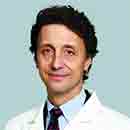
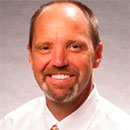
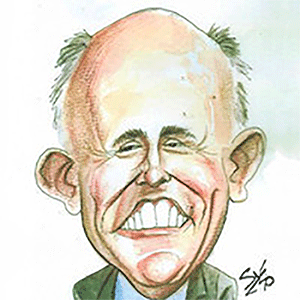

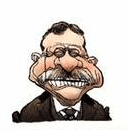

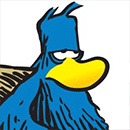

Comments